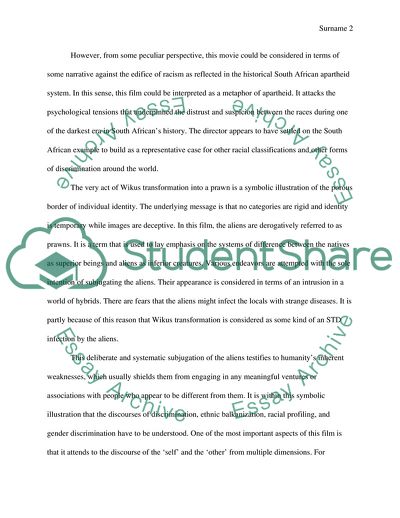Cite this document
(District 9: Lens-Driven Analysis Movie Review Example | Topics and Well Written Essays - 1500 words, n.d.)
District 9: Lens-Driven Analysis Movie Review Example | Topics and Well Written Essays - 1500 words. https://studentshare.org/visual-arts-film-studies/1785775-lens-driven-analysis
District 9: Lens-Driven Analysis Movie Review Example | Topics and Well Written Essays - 1500 words. https://studentshare.org/visual-arts-film-studies/1785775-lens-driven-analysis
(District 9: Lens-Driven Analysis Movie Review Example | Topics and Well Written Essays - 1500 Words)
District 9: Lens-Driven Analysis Movie Review Example | Topics and Well Written Essays - 1500 Words. https://studentshare.org/visual-arts-film-studies/1785775-lens-driven-analysis.
District 9: Lens-Driven Analysis Movie Review Example | Topics and Well Written Essays - 1500 Words. https://studentshare.org/visual-arts-film-studies/1785775-lens-driven-analysis.
“District 9: Lens-Driven Analysis Movie Review Example | Topics and Well Written Essays - 1500 Words”. https://studentshare.org/visual-arts-film-studies/1785775-lens-driven-analysis.


